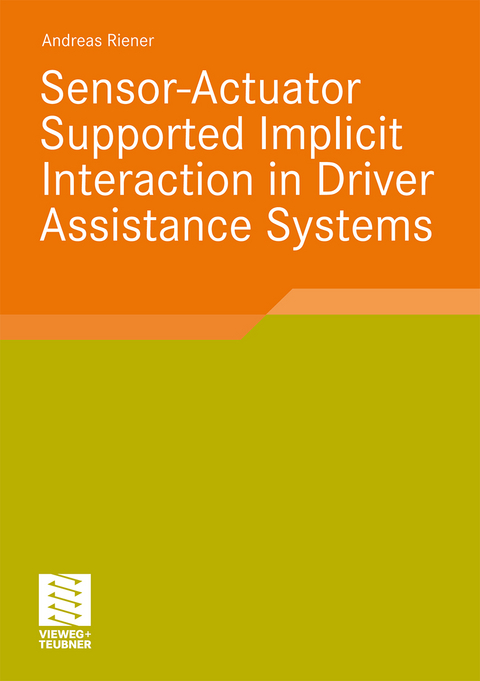Sensor-Actuator Supported Implicit Interaction in Driver Assistance Systems
Vieweg & Teubner (Verlag)
978-3-8348-0963-6 (ISBN)
Dr. Andreas Riener is a research and teaching assistant at the Institute for Pervasive Computing, Johannes Kepler University Linz, Austria, and is employed as a researcher at the Research Institute for Pervasive Computing (RIPE) in Hagenberg, Austria.
Research Hypotheses.- Perception.- Driver Expression.- Perception and Articulation.- Hypotheses and Research Questions.- Driver-Vehicle Interaction.- Vibro-Tactile Articulation and Presentation.- Information Needs of Drivers.- The Driver as the Weak Point in Interaction.- Driver Activity and Notification Demands.- Advanced Driver Assistance Systems (ADAS).- Vibro-Tactile Interfaces.- Methodology.- Analytical Methods.- Experiments.- Discussion and Conclusion.- Predeterminations for Investigation.- Reflecting on the Hypotheses.- Experiments: Lessons Learned.- Conclusion.- Future Prospects.
| Erscheint lt. Verlag | 14.1.2010 |
|---|---|
| Zusatzinfo | XXVIII, 287 p. 79 illus. |
| Verlagsort | Wiesbaden |
| Sprache | englisch |
| Maße | 148 x 210 mm |
| Gewicht | 417 g |
| Themenwelt | Informatik ► Software Entwicklung ► User Interfaces (HCI) |
| Mathematik / Informatik ► Informatik ► Theorie / Studium | |
| Technik ► Fahrzeugbau / Schiffbau | |
| Technik ► Maschinenbau | |
| Schlagworte | Advanced Driver Assistance System • Automobil • Design • Driver-Vehicle Feedback • Fahrerassistenzsysteme (Kraftfahrzeug) • Human-Computer Interaction (HCI) • Implicit Interaction • multimodal interaction • Seat Pressure Interfaces • Vibro-tactile Feedback Systems |
| ISBN-10 | 3-8348-0963-2 / 3834809632 |
| ISBN-13 | 978-3-8348-0963-6 / 9783834809636 |
| Zustand | Neuware |
| Haben Sie eine Frage zum Produkt? |
aus dem Bereich




